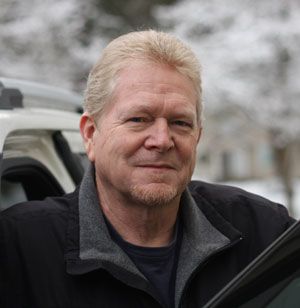Violator etiquette
Workers in the retail and service industries have told me that customers are a bit surly lately. I hope that wanes after the novelty of isolation-release wears off. Whatever you mood may be, at least remember to be on you best behavior if pulled over by a cop.
Drivers are usually nervous when a police vehicle is following them, but that’s not warranted if you are driving properly. However, if you see that cruiser’s blue lights lit behind you, “nervous” is likely an understatement.
Traffic stops by law officers happen to many motorists every day. The purpose of these stops is to enforce traffic laws through education and enforcement. Pullovers are effective in letting drivers know the errors of their ways in real time, in the midst of the offending act.
Traffic stops are not predominantly for ticket writing — though they’re a vital revenue source — but rather they exist to make the roads safer for everyone. Toward that goal, officers focus on violations most known to threaten motorists with injury or death: driving while impaired, speeding, aggressive driving, failure to wear seat belt, and following too closely.
Likely pullover causes include all those listed above, but sporadic emphasis on other transgressions happen, such as unwarranted left-lane use. Equipment violations (vehicle height, window tint, lighting) are also police-monitored.
Your traffic stop may be by city police, county sheriff, or state patrol. In all those cases, drivers should expect professional behavior from the police, while police should expect courteous, predicable behavior from drivers.
The WSP “Good to know” YouTube series includes an entry regarding traffic stops. The video reminds us that officers face potential peril each time they approach a vehicle. Annually, over 100 officers killed nationwide during traffic stops.
Not knowing who they will encounter on a stop is an officer’s disadvantage — you know you’re not a criminal, but they do not. As a result, certain tactics employed for trooper safety may seem standoffish, but they are not wishing to offend.
What’s the expected cop-stop etiquette? First and foremost, upon seeing the cruiser’s lights, quickly but safely pull to the right and stop. If you hear their siren, it’s probably because you didn’t respond to the lights, which may alter the officer’s attitude — they dislike daydreamers.
Always remain in your vehicle and let the officer come to you. They think a disembarking driver is about to flee or fight. And your vehicle offers you safety from potentially distracted passing motorists who may strike someone or something in the vicinity of your stop.
You can reassure your innocuous intent to the officer by keeping your hands in plain sight as he or she approaches — resting them atop the steering wheel is the best choice. Don’t go digging in the glove box for registration and proof of insurance until the officer arrives and requests those items. Drivers may be trying to help, but officers don’t know whether those drivers are looking for documents or a gun.
Being stopped aside the roadway is risky for all involved, so don’t extend the stop by arguing with the officer. If you are ticketed and don’t feel you deserve it, bring your argument before the court.
The WSP professes that their contacts via traffic stops will be guided by their agency motto: Service with Humility. Please afford them and all officers similar consideration.
Readers may contact Bill Love via e-mail at precisiondriving@spokesman.com.
